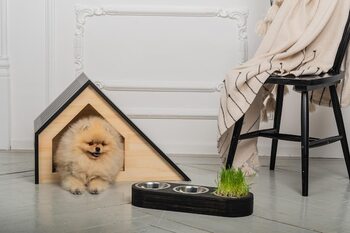Spaces that promote mental health in family life

Spaces that promote mental health in family life Mental health is a fundamental pillar in the lives of families, and the spaces where we coexist play a crucial role in their well-being. Creating environments that encourage connection, calm, and creativity not only improves our family relationships but also fosters an atmosphere of emotional support. In this article, you will discover how to design your home to enhance the mental well-being of all its members and transform your dwelling into a refuge of peace and harmony.
The importance of interior design in emotional well-being
Interior design has a significant impact on our emotional and mental health. Colors, textures, and the arrangement of furniture can influence our mood and family interactions. For example, soft and warm tones can create a sense of calm and comfort, while a cluttered or poorly lit space can increase stress and anxiety. By paying attention to these details, we not only transform the aesthetics of the home but also create an environment conducive to the emotional well-being of all its inhabitants.
Additionally, interior design can foster deeper connections among family members. Open spaces that invite conversation, cozy areas for sharing moments together, and quiet corners for personal reflection are key elements that help establish healthy relationships. Incorporating elements such as natural plants or personalized art can also elevate mood and promote creativity, contributing to a harmonious family atmosphere. Ultimately, investing time and effort in home design is essential for cultivating an environment that supports the emotional well-being of each family member.
2. Multifunctional spaces: fostering family interaction
Multifunctional spaces have become an essential trend for fostering family interaction and promoting mental health. By integrating various areas within the home, such as a living room that also functions as an office or a dining room that transforms into a play area, opportunities are created for family members to share meaningful moments. This flexibility not only optimizes space usage but also facilitates communication and joint activities, thereby strengthening emotional bonds among all. An environment where every corner can adapt to different needs stimulates creativity and allows each individual to express themselves freely.
Additionally, these multifunctional spaces can be designed to include elements that promote calmness and well-being. For example, by incorporating rest areas with comfortable armchairs next to work tables, it invites enjoyment of moments of relaxation amid daily tasks. The implementation of soft colors and natural materials also helps create a pleasant and welcoming atmosphere. By establishing an environment where everyone can feel comfortable and connected, it promotes the emotional support necessary to face everyday challenges, turning the home into a safe refuge that enhances the mental well-being of each family member.
3. The influence of color on family mood
The choice of colors in the home has a significant impact on the mood and emotions of its inhabitants. Warm tones, such as yellow and orange, can infuse energy and joy, promoting communication and connection among family members. On the other hand, cool colors like blue and green tend to provide a sense of calm and serenity, which can be especially beneficial in spaces where the aim is to reduce anxiety or encourage reflection. By carefully selecting colors for each room, you can create an environment that aligns with your family's emotional needs.
In addition to the individual emotional impact that colors can have, they also influence group dynamics within the home. A space painted in soft, inviting tones can encourage moments of shared relaxation, such as reading together or enjoying a quiet conversation. In contrast, an environment filled with vibrant colors can stimulate more playful and creative activities, thereby promoting positive interactions among all members. The key is to find a balance that reflects both the family's personality and the desired purpose for each area of your home, ensuring that each chosen color contributes to collective well-being.
4. Nature inside the home: psychological benefits of plants
Plants are more than just simple decorative elements; their presence in the home can have a significant impact on our mental health. Nature has an innate ability to calm the mind and reduce stress, and by incorporating greenery into our spaces, we create an environment that fosters tranquility. Studies have shown that interacting with plants not only improves our mood but also enhances our creativity and concentration. This is especially beneficial in a family environment where daily demands can create tensions, offering a natural respite that invites relaxation.
In addition to their positive psychological effects, plants also help improve air quality and create a healthier microclimate in the home. By purifying the air and increasing oxygen levels, they promote an environment conducive to physical and mental well-being. Including different types of plants, from small pots to vertical gardens, allows for the personalization of spaces according to family preferences. Each member can get involved in their care, which strengthens emotional bonds and teaches responsibility to the younger ones. Thus, incorporating nature into the home not only beautifies our spaces but also acts as a powerful ally in promoting mental health within family life.
5. Creating relaxation zones: corners to disconnect
Creating relaxation zones at home is essential for fostering an environment conducive to mental health. These special corners can be designed with elements that invite tranquility, such as comfortable chairs, good soft lighting, and decorations that convey serenity. A space dedicated to meditation or reading can become a personal refuge where each family member can disconnect from daily stress. The inclusion of plants and natural elements also helps create a fresher and more revitalizing atmosphere, which stimulates a deeper connection with the surroundings.
It is also essential to consider how these spaces integrate into family dynamics. By setting specific times to enjoy these corners, a healthy habit of self-care is fostered among all household members. Whether through family yoga sessions, joint reading, or simply enjoying the silence, these practices not only strengthen family bonds but also provide valuable moments to recharge. At the end of the day, having areas dedicated to relaxation benefits not just the individual but also contributes to the collective well-being of the family as a whole.
6. Proper lighting: how it affects our mental health
Proper lighting in our spaces has a significant impact on our mental health. Natural light, for example, not only improves mood but also regulates our circadian rhythms, which can lead to better sleep and increased energy during the day. Incorporating large windows or strategically placed mirrors can maximize the entry of natural light, creating a brighter and more welcoming environment. Additionally, it is important to consider the color temperature of artificial lights; opting for warm tones can create a sense of calm and comfort, while cool lights can be beneficial for tasks that require concentration.
On the other hand, lighting is also related to our daily activities and moments shared with family. Using different types of lights in different areas of the home—such as soft lamps for relaxation areas and brighter light in workspaces—allows for the creation of appropriate atmospheres that promote both relaxation and productivity. Additionally, integrating dimmable options or dimmers offers versatility to adjust the light intensity according to the time of day or the activity at hand. Ultimately, taking care of lighting not only physically transforms spaces but also directly influences our emotional well-being and family cohesion.
7. Organizing chaos: order and its relationship with mental tranquility
Home organization is more than an aesthetic issue; it is a powerful tool for cultivating mental tranquility. A cluttered space can generate anxiety and stress, directly affecting our emotional well-being. By taking the time to tidy and structure our environments, we not only facilitate the functionality of each area but also create a conducive atmosphere for calmness and concentration. The simple act of sorting objects, eliminating the unnecessary, and assigning a specific place for everything can provide a sense of control that translates into inner peace.
Additionally, the organization promotes mental clarity by reducing visual and emotional distractions. When our spaces are tidy, our minds have more freedom to focus on what truly matters: time with our loved ones, creative activities, or moments of personal reflection. Investing in a proper organization system not only improves our daily quality of life but also helps establish healthy habits within the family. Thus, by transforming chaos into harmony, we create a refuge where all members can thrive emotionally.
8. Art and creativity: expressions that strengthen family bonds
Art and creativity are powerful tools that can strengthen family bonds, promoting more open communication and a deeper understanding among its members. Dedicating spaces in the home for artistic activities, whether it's a painting corner, a craft table, or simply an area to showcase family art, encourages individual and collective expression. These activities not only allow each family member to explore their creativity, but also generate shared moments filled with laughter, learning, and memories that become the emotional fabric of the family.
Additionally, engaging in creative projects together can be an excellent way to tackle difficult topics or generate meaningful conversations. By working together on an artistic project, families can learn to collaborate, listen to different perspectives, and resolve conflicts constructively. Artistic creation thus becomes a vehicle for strengthening empathy and mutual support. Investing time in these expressions not only beautifies our homes but also cultivates an emotionally healthy environment where everyone feels valued and understood.
9. Balanced technology: design for healthy coexistence
Technology has become an integral part of our lives, and its integration into the home must be approached with balance. To foster an environment that prioritizes mental health, it is essential to design spaces that not only utilize technology efficiently but also promote meaningful interactions among family members. For example, establishing areas dedicated to screen-free activities, such as shared readings or board games, can help reduce time spent in front of electronic devices and strengthen family bonds. At the same time, selecting smart devices that facilitate home organization or promote emotional well-being—such as adjustable lighting systems or meditation apps—can contribute to creating a more harmonious environment.
It is also essential to establish clear boundaries regarding the use of technology at home. Creating designated moments to disconnect and enjoy outdoor activities or share meals without digital distractions helps cultivate a healthy coexistence. Additionally, promoting creative alternatives such as art workshops or family exercise sessions can enrich interpersonal relationships and provide opportunities for genuine connection. Ultimately, finding this technological balance not only improves family dynamics but also contributes to the positive emotional development of each household member.



